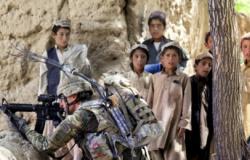What does ‘Security’ mean? Great (and well-written) paper from IDS

Duncan Green explores a new paper from IDS' Robin Luckham on the contested concept of security.
I have been known in the past to be a little snippy about the writing style of esteemed colleagues from the Institute of Development Studies. So in the interests of balance, I want to celebrate a beautifully written, lyrical paper by IDS’ Robin Luckham. Whose Security? Building Inclusive and Secure Societies in an Unequal and Insecure World (OK, they could have worked on the title) is also hugely ambitious (it summarizes the evolution of the concept of Security since the French Revolution) and very thought provoking. Which makes it very hard to do justice to it in a blog, but here are some appetite-whetters.
A taste of the writing from the exec sum:
‘Development researchers, governance specialists, security and international relations analysts are cartographers of the modern world. Their job is to untangle the tangled, yet in doing so they all too often make flat all that is high and rolling. This paper considers one particular piece of map-making: the interface between security and development. It tries to render visible some of the bumps, joins and turnings which lie beneath the maps.
The theory and practice of security, like that of development, issued from the historical transformations which gave rise to the post-Second World War world order. Since the end of the Cold War they have increasingly intertwined and security has been mainstreamed into
development. Yet neither security nor development has fully extricated itself from the violent and extractive relationships which developed in the colonial period and continue in many respects to this day.
Contradictions lie at the heart of the security – development nexus. On the one hand, security is a process of political ordering. Even more than development, it intermeshes with established power structures, property relations and inequalities. On the other hand, it is founded upon the claim that states and other forms of public order make citizens safe from violence and insecurity. In principle, it is equally shared and socially inclusive, even if in practice it is anything but.
The vernacular understandings, day-to-day experience, resilience and agency of the people and groups who are ‘secured’ and ‘developed’ are the touchstone by which to evaluate security. Most people fall back upon their social identities – as women and men, members of families, clans, castes, ethnic groups, sects, religions and nationalities – to navigate their social worlds, to respond to insecurity and (sometimes) to organise for violence. At the same time, these identities are written into the structures of power and inequality, being deployed to establish hierarchies of citizenship and patterns of exclusion. Ensuring that security is inclusive is fraught with difficulty and must be negotiated at multiple levels.
The security–development nexus is not only historically contingent, but is also being torn apart by the gathering winds of change. Global balances of profit and power are shifting as new poles of global economic growth and political influence emerge. Powerful market forces drive the privatisation of the military and security sector, as well as feeding the markets in drugs and other illegal commodities, which create powerful incentives for political as well as criminal violence. Rapid technological changes, notably in information technologies, are transforming the worlds of war as well as work, and translate into struggles to control communication and shape political discourse. The framework of political authority is loosening, called in question by new forms of subaltern politics, not just in ‘fragile’ states, with greatly varying consequences, some violent, others more peaceful.
The body of the paper sets out a thought-provoking set of polarities in a series of tables, (very useful for teaching purposes). Here are two of them:


There is also a nod towards systems thinking and ‘working with the grain’, including this great passage on critical junctures:
‘Too often historical opportunities opened at such critical junctures are missed. Or they are grasped by those, who happen to be in control of the means of force. Or they merely open the way to renewed cycles of violence and insecurity. Five such critical junctures seem especially worthy of attention:
- Ruptures in ‘strong’ authoritarian regimes challenged by popular protests and/or armed rebellion. The key issue here tends to be who seizes the political moment and how. Outcomes have varied enormously even in the same region – like post-communist Eastern Europe or in post-Arab Spring Middle East – ranging from civil war to varieties of authoritarian restoration to viable democratic transitions.
- Political transitions forged after successful armed uprisings against repressive ancien régimes, including in some cases those previously propped up with external support (like Vietnam, Ethiopia, Eritrea and pre-genocide Rwanda). These uprisings open spaces for change, but also bring to power militarised groups, some in the Leninist mould, who tend to be resistant to democratic changes they are unable to stage-manage.
- Political settlements brokered through negotiated peace agreements, which end mutually hurting stalemates (as in El Salvador, South Africa, Sierra Leone, Nepal and potentially Colombia), and create spaces for democratic politics that are hard for any one party or group to monopolise.
- The creation of pockets of peace within conditions of durable disorder (like in Somalia, DRC, Haiti and South Sudan) which can eventually become starting points for democratic alternatives to violence, as in the case of Somaliland.
- Shifts in political balances within existing competitive or partially competitive democratic systems (like the recent opposition electoral victories in Sri Lanka and Nigeria), which could (but may not) reinvigorate ailing democratic institutions, and help contain violence.’
Great stuff. As I said, impossible to summarize the paper adequately, but I hope this is enough to get you clicking through.
This post first appeared on Duncan Green's blog.
Photo credit: The U.S. Army via Foter.com / CC BY


